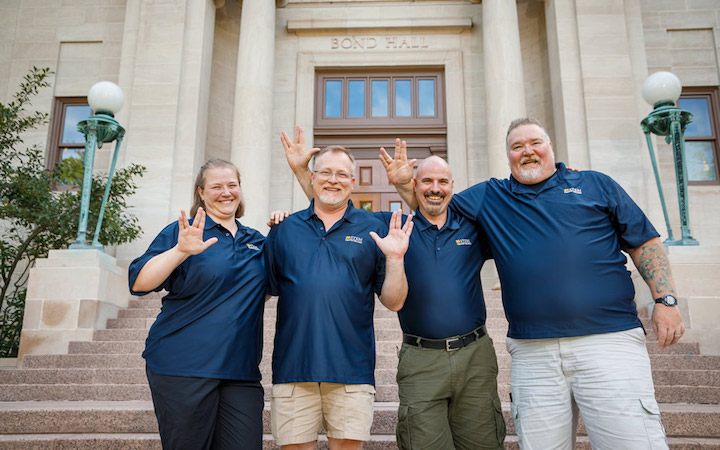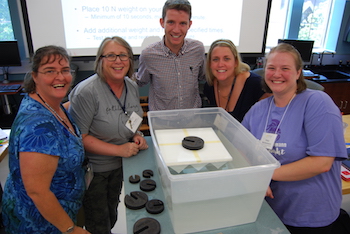Together We Teach: Collaborating as Co-Teachers in STEM
on Tuesday, 12 November 2019
Nikki Bartholomew, Trustey Cohort 3 - St. John Neumann Regional Academy in Williamsport, PA

Integrated STEM, Integrated Expertise
STEM is, at its heart, a collaborative endeavor. In our Pennsylvania backyard, we see this in the design, building plan, and coordination required to test and fix many of our local bridges. Without the perspectives of the engineers, construction workers, government officials, or any other collaborators, a project couldn't make its way to completion.
Similarly, implementing effective STEM education in a school requires teachers across multiple disciplines to share perspectives and work together. I have been teaching integrated STEM for a little over a year, and our elementary school has even adopted the acronym STREAM in order to acknowledge the integration of art and religion into our STEM curriculum.
While many teachers are accustomed to teaching their classes by themselves, spending most of the day only with their students, our school administration has created co-teaching opportunities in the senior high STEM class and in the middle school grades. My background is in technology, but the nature of our STREAM curriculum requires that I learn more about the other disciplines in order to incorporate them meaningfully.
Speaking from observation and experience, co-teaching, when implemented well, can be a very powerful tool to create teaching partnerships that reflect each educator’s strengths and help teachers learn from one another.
Learning from Others: Not Just for Students!
This year, I have had the privilege of co-teaching with our elementary art teacher, Barbara Greenway, who has been an amazing addition to our STREAM classroom. Our students, beginning their work with robotics, had been discussing movement, coding, and using the Engineering Design Process to prepare for their big projects.
When Mrs. Greenway saw the small multicolored, plastic cups the kids were using to test materials, she was so struck by their beauty that she began chatting with some students about their designs. Her unique perspective led us to use Flipgrid to hear students’ engineering processes, giving us a much richer understanding of the students’ designs than a picture and a paragraph.
The students also thought of an interactive art gallery to draw attention back to the arts. Alone, I wouldn’t have thought to ask the questions to get the students to this level of integration. Together, we each brought our unique perspectives with us, and our classes are better and richer for it. Together, we collaborate and work as a team in a very real way for students.
 Collaboration Towards Equity and Access
Collaboration Towards Equity and Access
Co-teaching has definitely benefited the STEM teachers in our school over the past three years. It has helped the teachers to refine their thoughts and ideas, offering them a collaborative partner to develop ideas. Co-teaching offers an extra pair of eyes and ears for supervision, extra knowledge and expertise, and different viewpoints on topics. It helps teachers incorporate different life experiences, adding depth to the curriculum. It even helps with time-management, as when two teachers split the workload for projects. However, the biggest benefit of co-teaching has been for our students.
Two of my science colleagues, with completely different science backgrounds, personalities and teaching styles, co-teach our physics class. This collaboration illustrates that teacher personalities mesh with students in many ways, and different teaching styles work for different students.
One of these teachers focuses an excited, almost child-like wonderment towards physics, spreading a contagious energy and interest in the subject. He comes into the classroom and says, “Let’s blow it up!!” His colleague complements this experience with explanations featuring his high level of expertise. He contributes by adding, “Let’s talk about why this blew up.” Co-teaching offers students an additional voice in the classroom, allowing for more equitable and accessible teaching.
All of these things combine to help students enter the learning from more diverse and authentic places, help teachers recognize and meet the needs of their students, and offer more hands to ensure the students get the help they need to achieve their goals, no matter their background or education levels. Similar to the teams of people required to test and repair our Pennsylvania bridges, co-teaching offers us this opportunity to collaborate and achieve goals in a meaningful and deep way.
Interested in becoming a Trustey Fellow?


